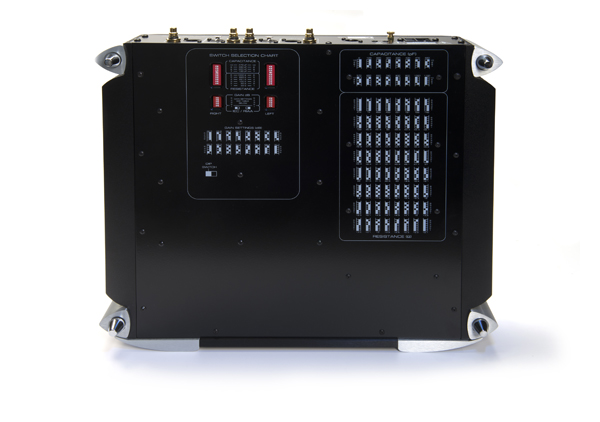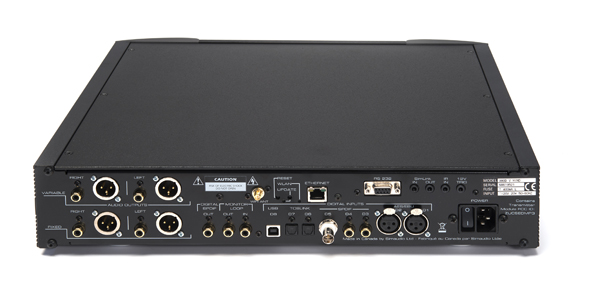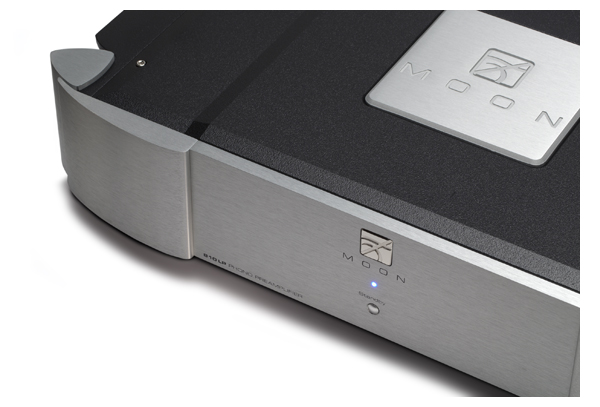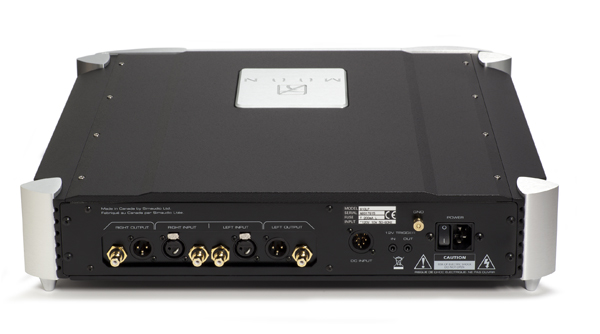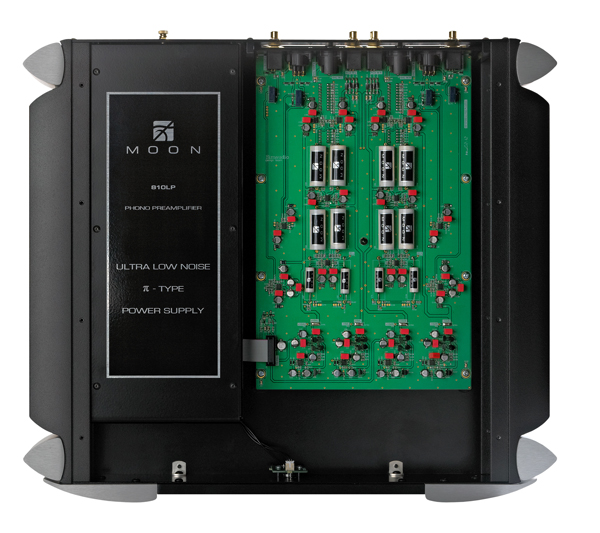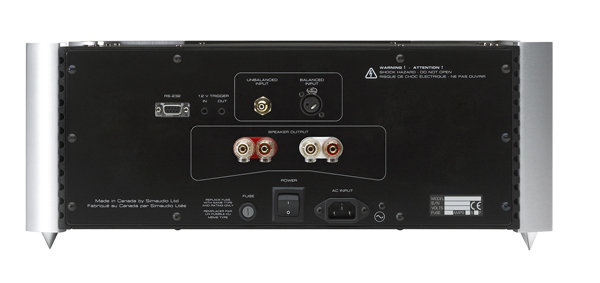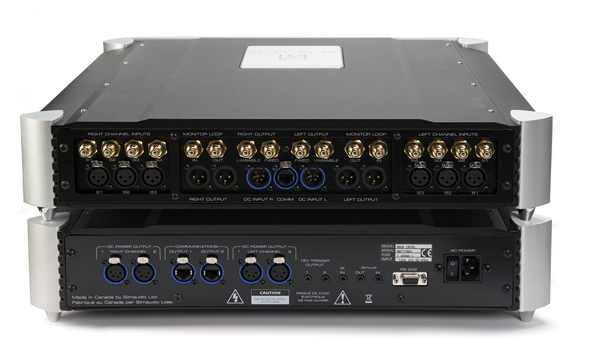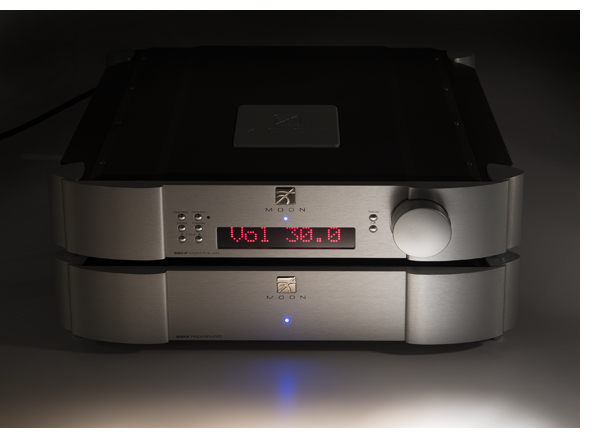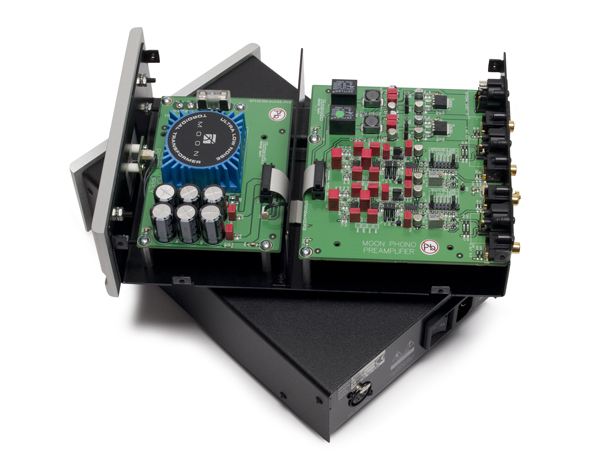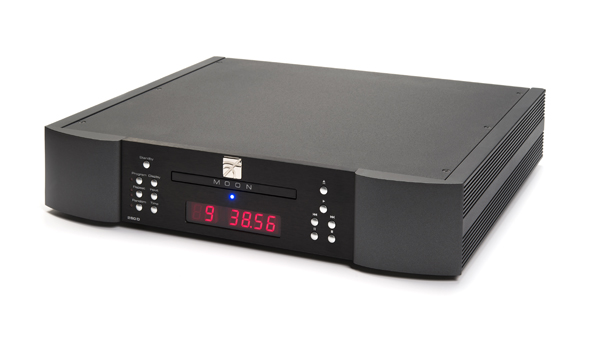 With more and more audiophiles getting into digital music these days, it is no wonder that many manufacturers are releasing CD players that are also high-quality DACs. Canada’s MOON by Simaudio has joined the crowd with three models, the Evolution 650D (currently a reference component in our publisher’s system) and, for this review, the more-affordable Nēo 260D.
With more and more audiophiles getting into digital music these days, it is no wonder that many manufacturers are releasing CD players that are also high-quality DACs. Canada’s MOON by Simaudio has joined the crowd with three models, the Evolution 650D (currently a reference component in our publisher’s system) and, for this review, the more-affordable Nēo 260D.
The unit is available as simply a CD transport ($1,999) or with a 32-bit DAC able to play files with resolutions as large as 24 bits/192 kHz ($2,999). Like the pricier Evolution series 650D, the Nēo 260D is a full-function CD player with four digital inputs: S/PDIF, RCA, TOSLINK and USB. In typical MOON fashion, technical and design elements of the Evolution line make their way down to the Nēo line—specifically, in this case, the four-point gel-based mounting system. Paired with power-supply and circuitry improvements and their rigid casework (all done in-house), this adds up to a digital player that all but eliminates mechanical and electrical noise.
Fit and finish are exceptional—no sharp edges, and screws are recessed to avoid catching—though, for some of the casework, the aluminum of the Evolution line is replaced by plastic in the Nēo line to save cost. But, most importantly, the company does not scrimp on the connections, which are level and tight.
The ergonomics of the Nēo 260D are first-rate, with all system and playback controls flanking the LED display, which has two brightness levels, and the lettering and symbols large but not distracting. Included is a plastic remote with well-defined controls, though I wish the color contrast were greater.
The transport spins and pulls up the track information very quickly. Even when spinning a badly scratched disc that no other CD player in my home can even read, the Nēo 260D pulls up the information and manages to play every track with only one skip.
What’s the Difference?
The one word that describes the sonic signature of all MOON products is natural. They offer a ton of resolution but don’t embellish. The Nēo 260D renders Jethro Tull’s classic track “Mother Goose with a richness in the upper-mids and treble that my less-expensive MOON series 300D DAC does not—and that’s the difference between an average transport and a really good one: how much it improves a poor-sounding disc and how much information it can extract from a phenomenal one.
Billy Joel’s album 52nd Street is my torture-test favorite. While the vinyl copy produces a three-dimensional soundstage, the original CD is flat and lifeless. While the Nēo 260D’s rendering of this disc doesn’t fool me into thinking it’s vinyl, it does manage to expand the soundstage enough that Joel’s voice during the fast-tempo ballad “Stiletto” offers up an improved sense of drama. The xylophone in the opening of “Rosalinda’s Eyes,” which normally sticks right at the grille of the speaker, is now a foot or so deeper into the soundstage, bringing some life to a previously sterile disc.
Recreating the recording environment is always a plus—and a more difficult task when the listener knows the venue. A live acoustic version of Toad the Wet Sprocket’s “All I Want,” recorded at a local radio station’s annual compilation, benefits greatly from the Nēo 260D’s ability to recreate the small concert room, with vocals demonstrating the natural reflections of the intimate setting. From the same CD, Blitzen Trapper’s “Thirsty Man” provides plenty of air and space for the lead guitar. Again, the Nēo 260D creates greater separation than my current reference, drawing me further into this amateur but engaging recording. Simaudio’s Lionel Goodfield confirms that the Nēo 260D’s DNA comes from the top-of-the-line Evolution series 650D and 750D rather than the MOON 300D.
Going Deeper
The Bill Evans Trio’s “Our Love Is Here To Stay” exhibits tremendous clarity with an equal balance of musicality—particularly the resolution of the drum kit, the definition of the acoustic bass, and the richness of the rich piano. Even on recordings where the piano leans toward edgy, the MOON does an excellent job navigating through difficult sonic zones without losing musicality. The somewhat forward-tilted Alison Krauss album Forget About It further illustrates the Nēo 260D’s ability to retrieve maximum detail without sonic sacrifice.
But tremendous recordings illuminate the full beauty of the Nēo 260D, making it easy to forget you are listening to digital at all. Hans Zimmer’s melodic soundtrack to the film The Holiday is a real treat, with the MOON keeping traditional acoustic and electronic instruments defined during the pleasant overarching melody in the main theme, “Maestro.” The Nēo 260D’s natural sound stays true to the relaxed playing of each artist.
Not Just a CD Player
With four digital inputs on the optional DAC, the Nēo 260D can be the digital hub of any home system. During my review, I used a JVC SACD player, Wadia iTransport with iPod, Apple TV, and MacBook connected simultaneously. Counting the CD transport, I have five sources to choose from—a true digital dream. (With the MacBook, I find equal satisfaction running iTunes with Amarra and Pure Music.)
Playing digital files through the Nēo 260D is a treat, especially with high-resolution files. A 24/44.1 version of Barb Jungr’s raw track “Many Rivers To Cross” oozes with emotion, the Nēo 260D digging out the harmonies in the chorus and granting each voice a distinct place. Switching to a 24/192 file is a cinch, thanks to an easy-to-read display. Dougie MacLean’s “Caledonia,” with its simple acoustic guitar and strings, floats through the room, capturing the air, delicacy and pace of the tune, with MacLean’s gentle guitar and voice expanding and contracting effortlessly.
Final Score
The Nēo 260D once again reaffirms why MOON gear is so popular among the TONEAudio staff. Most audio companies do one type of equipment well—not so with Simaudio; each of its products is first-rate for its price point.
The Nēo 260D delivers tremendous resolution, an incredibly low noise floor and top-notch parts and construction, but most importantly, it offers a natural musical presentation. I thought my days of using a CD player were over—but the Nēo 260D CD Transport/DAC has me seriously rethinking my digital-equipment strategy.
Additional Listening
By Jeff Dorgay
Having used their flagship Evolution series 750D extensively and now using the Evolution series 650D as my reference digital player, I can easily see the lineage. Their engineering continues to refine the company’s products, giving the consumer a healthy dollop of cost-no-object products at workingman’s prices.
No, the Nēo 260D does not give you 88 percent of the Evolution series 650D for a third of the price, but it probably does give you 50 percent—or maybe even a bit more. And realistically, the Nēo 260D makes a ton of sense in a sub-$20,000 system, whereas the 650D, especially with the outboard Evolution series 820S power supply, will be right at home in even a stratospheric system.
You always get a bit more than you pay for with MOON by Simaudio products, and if you like the way the company does things, each product reveals more musical impact and nuance as you go up the product line. Much like with Porsche or BMW, you just get more of the brand’s essence as you spend more money.
As Simaudio’s Lionel Goodfield is quick to point out, the Nēo 260D “is first and foremost a transport; the drive mechanism and suspension are virtually identical to those in the 650D and 750D.” Like its more expensive stable mates, the Nēo 260D is built in-house and not supplied by an external manufacturer. And while I enjoy the DAC part of the equation, I concentrate during my review on using it solely as a transport, pairing it with a wide range of DACs—from the inexpensive Meridian Explorer all the way up to the $109,000 dCS Vivaldi stack.
If you need a great DAC and want the ability to play an actual disc now and then, the extra $1,000 for the Nēo 260D with onboard DAC is well worth the added cost. Those with a great DAC already installed in their system and wanting to either replace an aging (or dead) transport will be amazed by the Nēo 260D’s sound quality. Fifteen years ago a transport this good would have a $10,000 price tag attached; This MOON does it for just $3,000. Now that’s progress.
Simaudio MOON Nēo 260D CD Transport/DAC
MSRP: $1,999 ($2,999 with DAC)
PERIPHERALS
Integrated Amps
MOON Evolution series i-7 Vista Audio i34 Tube
Sources
MacBook iTunes w/ Amarra or PureMusic JVC SACD player Wadia 170i Transport w/ iPod Classic Apple TV
Speakers
Harbeth Compact 7es3 Magnepan 1.6 w/Skiing Ninja x-overs Penaudio Cenya



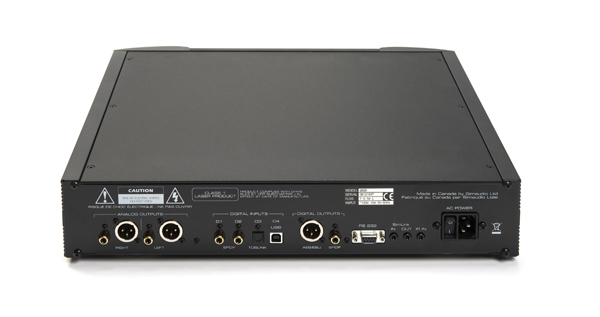
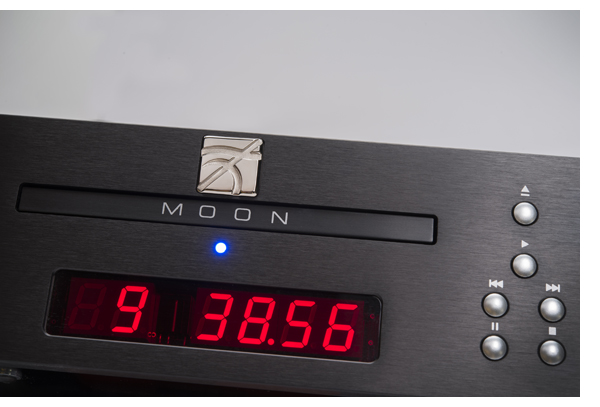
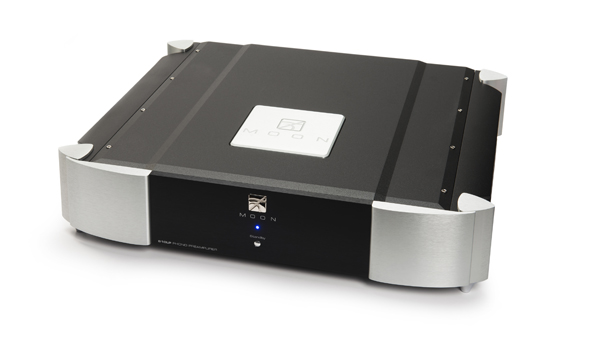 Bouncing between St. Vincent’s current and last album, I can’t help but be in awe of the staying power of the vinyl record. Thanks to the many manufacturers, like Simaudio, who have not only kept the faith, but continue to innovate and refine their designs, spinning records is better than ever in the year 2014 than it ever was. Who knew? Even better much of the technology in flagship designs is making its way down the food chain to more affordable designs like the MOON 610LP here.
Bouncing between St. Vincent’s current and last album, I can’t help but be in awe of the staying power of the vinyl record. Thanks to the many manufacturers, like Simaudio, who have not only kept the faith, but continue to innovate and refine their designs, spinning records is better than ever in the year 2014 than it ever was. Who knew? Even better much of the technology in flagship designs is making its way down the food chain to more affordable designs like the MOON 610LP here.